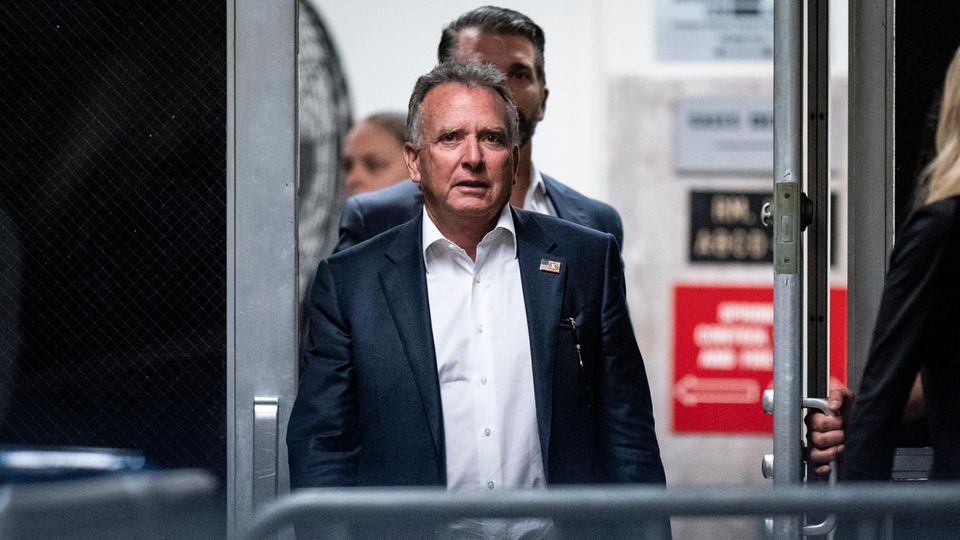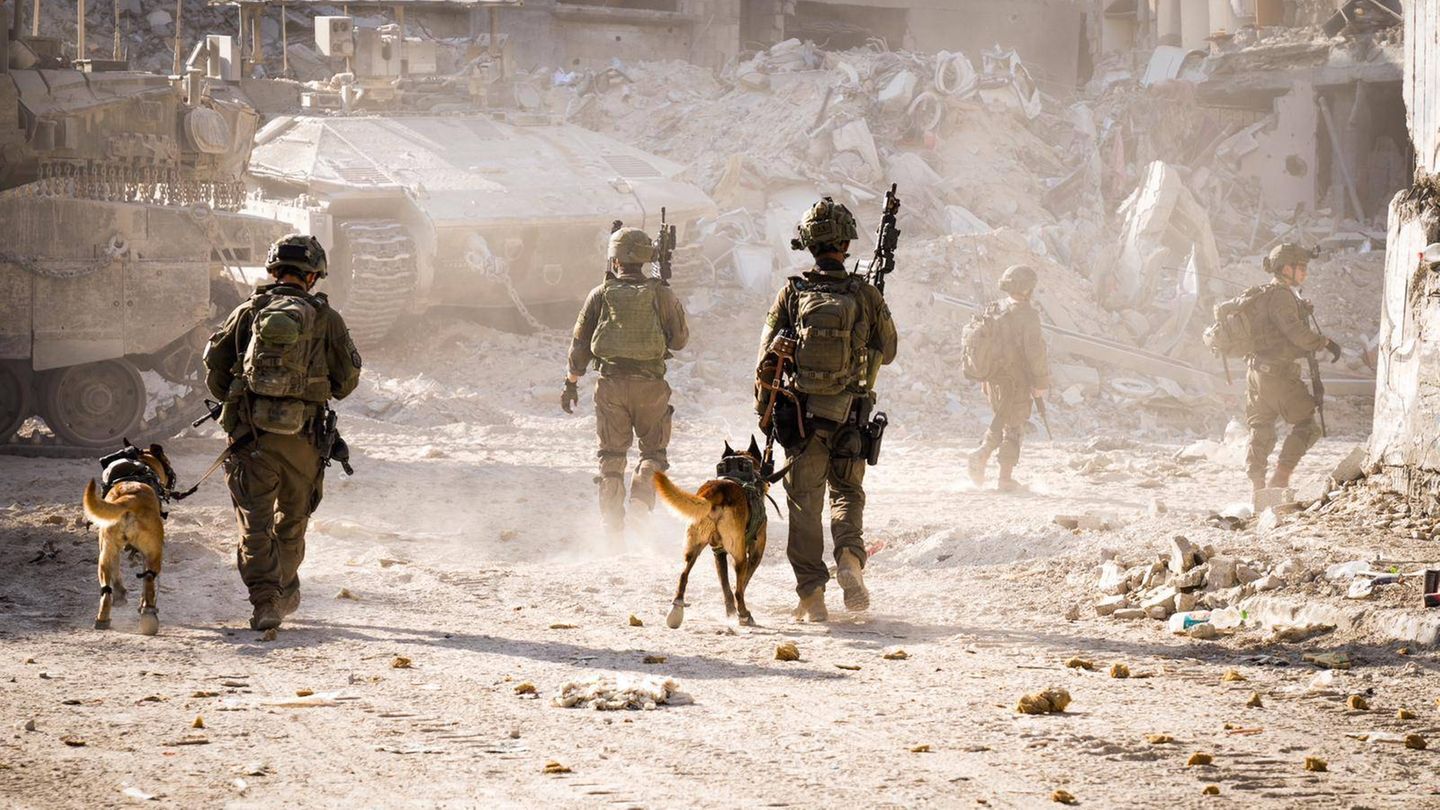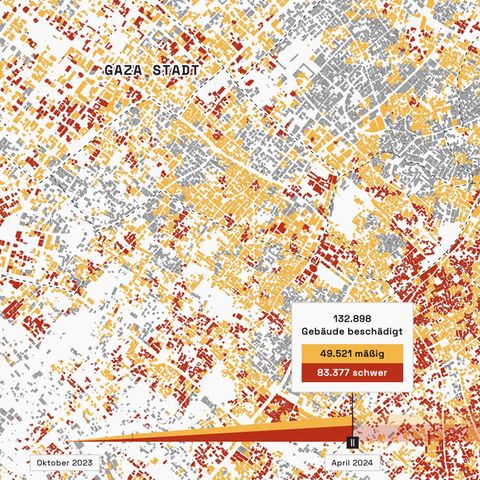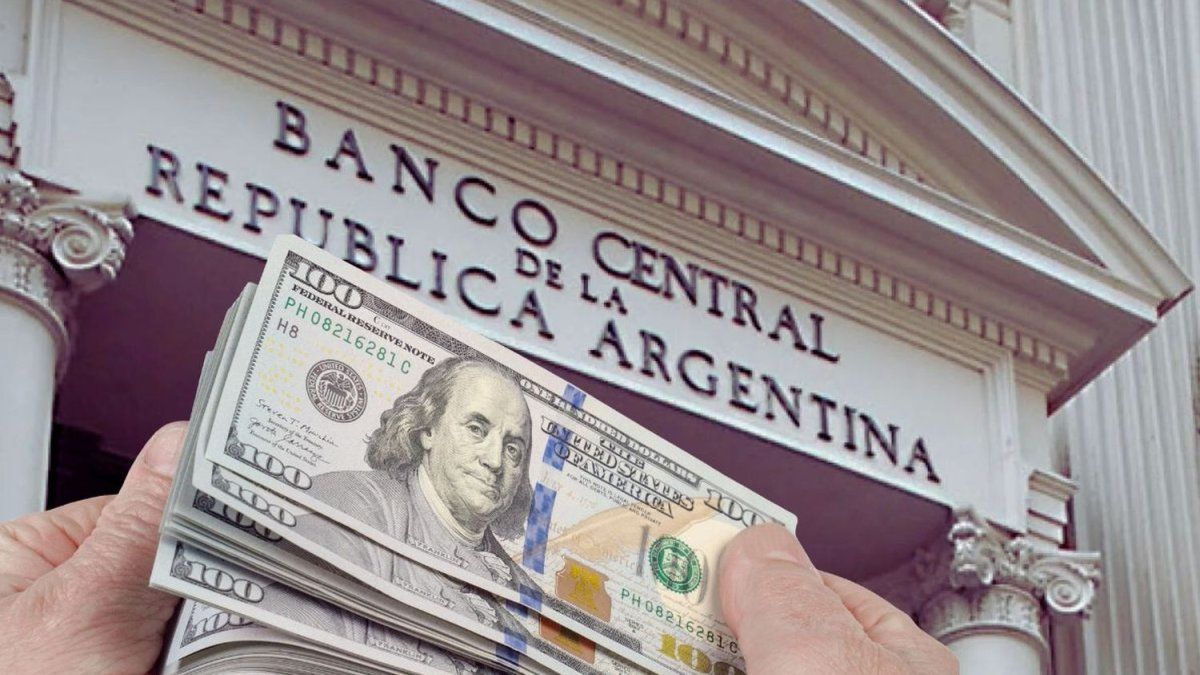Copy the current link
In a few days, Israel’s hostages are expected to return and the weapons in Gaza will fall silent. There is an agreement with Hamas, also thanks to Donald Trump. The violence doesn’t end there.
Kfir Bibas couldn’t yet know what was happening to him when the bearded men came with the Kalashnikovs. He was just eight months old that day, an infant with bright red hair that Hamas took from their home on Kibbutz Nir Oz to a dark hideout on October 7, 2023, along with his four-year-old brother Ariel, mother Shiri and father Yarden Gaza abducted.
This Saturday Kfir will turn two years old. No longer an infant, a toddler. More than half a life in terrorist hands.
If everything goes according to the plan negotiated by a group of powerful men in the Qatari capital Doha, the little boy will return to Israel shortly after his birthday. The sad truth is: Nobody knows whether he will make the journey to freedom hand in hand with his mother or in a body bag. At least 34 of the 94 hostages still held in Gaza are believed to be dead.
A deal “closer than ever”
Soon they will all return to Israel, just like hundreds of thousands of Palestinians displaced in Gaza to what is left of their homes. Soon the guns will fall silent after 15 months of relentless war. Over the course of Wednesday evening, it became clear that Israel and Hamas were able to agree on an agreement after days of tug-of-war.
There are positive signals in the chaos of all the negative headlines that the Middle East writes every day. Optimism is high these days, and dreams are allowed: Once Israel’s army has withdrawn from Gaza and Hamas has laid down its weapons as planned, Jews could live in safety and Palestinians in freedom. Finally. Or? It’s not that easy.
Because the plan for peace has huge gaps and pitfalls.
The roles at the negotiating table are clearly assigned
For days, an illustrious group in Doha has been wrestling with the final details of this deal. The tasks are clearly divided: Israel and Hamas only talk to each other about ties. Qatar’s prime minister and Egypt’s intelligence chief are accompanying a delegation from the terrorist organization, led by the interim head of the Politburo, Khalil al-Hayya. At the same time, Steve Witkoff, special envoy to future US President Donald Trump, speaks to the Israeli negotiators. These are David Barnea (director of the foreign intelligence agency Mossad) and Ronen Bar (director of the domestic intelligence agency Shin Bet). In the end, Brett McGurk, Middle East advisor to the current US President Joe Biden, puts everything on paper as a kind of secretary.
Based on what is known so far, the following points can be found:
In a first step, 33 hostages are to be released one by one – women, children, the elderly, the injured and the sick. In return, Israel releases hundreds of Palestinian prisoners. After this exchange, Israeli troops will be allowed to withdraw from the inhabited areas of Gaza and refugee Palestinians will be allowed to return from the south to the previously sealed off north of the coastal strip. A buffer zone along Gaza’s borders would initially remain under Israeli control.
This first, so-called humanitarian phase is expected to last 42 days. From the 16th day onwards, concrete negotiations will begin on the second phase. It envisages a complete withdrawal of Israelis and the return of the remaining Hamas hostages – young men and soldiers – in exchange for more Palestinian prisoners.
If all of this happens smoothly, Gaza will then be rebuilt and governed under the supervision of an international community and without the involvement of Hamas.
The deciding factor: a “Trump effect”
In principle, this three-stage plan corresponds to what Joe Biden put on the table for his ally Benjamin Netanyahu in May 2024. At that time, Israel’s prime minister spoke of the war goal of a “total victory” against Hamas and lectured international journalists with a pointer about the strategic importance of Gaza’s border with Egypt, known as the Philadelphia Corridor. He kept making new demands until a deal fell through.
Why does something Netanyahu refused to admit eight months ago seem possible now?
“We have reached a point where the returns from military efforts are diminishing and the costs continue to rise,” says Israel’s Institute for National Security Studies. Just on Monday, five IDF soldiers were killed and eight seriously wounded in an operation in northern Gaza. However, Orion sees the decisive factor not on the battlefield, but thousands of kilometers further west in the White House. He calls it: the “Trump effect.”
Netanyahu’s phone rang: an aggressive US diplomat was on the line
The future US president recently threatened that “all hell would break loose” in Gaza if the Israeli hostages were not released before he took office on January 20th. Trump made his inauguration the deadline for a Gaza agreement. In doing so, he put everyone involved under pressure:
Hamas, which probably fears that the American would from now on give the Israeli government a free hand in the event of a failed deal.

Would you like to know everything about US politics?
The starThe local team informs you every Saturday in the free “Inside America” newsletter about the most important developments and provides insights into how Americans really look at their country. Click here to register.
After entering your email address, you will receive an email confirming your registration.
The mediating states Qatar and Egypt, which are American allies, want to prove to Trump that they can deliver.
And also Netanyahu himself, whose office received a harsh call from the negotiating group in Doha last Friday evening. The Trump envoy Witkoff got in touch – like his boss, a real estate investor and businessman, not a trained diplomat in any case. He would arrive in Israel the following afternoon, he told Netanyahu’s staff. They politely explained: It was Shabbat, but the Prime Minister could meet him on Saturday evening. Witkoff, himself of Jewish descent, stated bluntly: Shabbat was of no interest to him.
His blunt message was heard. In a departure from official practice, Netanyahu appeared in his office on the holiday for an official meeting with Witkoff, who then returned to Doha to advance the talks.

It is highly unusual for a president-elect’s team to be so involved in diplomatic negotiations before he takes office. The Biden administration assured that there was full coordination between both teams. But Netanyahu reportedly only became more “flexible” after Witkoff became involved.
A Gaza deal could also cause problems for Netanyahu
Trump appears to have achieved his goal of putting more pressure on the process. Now he hopes that a peace deal will sweeten his return to the White House. He said in an interview on Monday: “I understand that there has been a handshake and that (the brokers) want to complete the deal – perhaps by the end of the week.”
After the final handshake in Doha, a vote will now follow in Jerusalem. Benjamin Netanyahu is assured of the necessary majority in his cabinet there. And yet an agreement could get him into political trouble. His two most right-wing cabinet members, Finance Minister Bezalel Smotrich and Security Minister Itamar Ben-Gvir, had always threatened to leave the government coalition in the event of an agreement with Hamas and thus collapse it.
Ben-Gvir, who belongs to the radical settlement movement and would like to see Gaza entirely occupied by Jews, renewed his threat this week. Smotrich met personally with Netanyahu again on Wednesday. It is considered unlikely that he will actually provoke a break in the coalition, but theoretically possible.
Who will ultimately govern Gaza?
It’s not the only pitfall of this deal. “It can go wrong in many ways,” security expert Assaf Orion tells the star.
It is quite possible that the plan will never go beyond its first stage, that further negotiations will fail and that the remaining hostages will be left behind as Hamas’s life insurance. It is conceivable that some of the released Palestinian prisoners, including those serving life sentences, will take up arms again.
Unanswered questions remain: Will Israel really withdraw from the Philadelphi Corridor? Where exactly should the many displaced Palestinians return to – to their apartment that has been bombed to rubble and ash? Who will pay for the reconstruction – the Israelis, the West, rich Gulf states? And who will ultimately govern Gaza?
Political analyst Assaf Orion says: “Gaza has deep structural problems. If you just replace the veneer upstairs, you don’t solve the underlying problem.” The most practical solution for him: Moderate Gulf states support the Palestinians in establishing self-government, international donors finance reconstruction, and the Israelis retain overarching security responsibility, for example with the import of goods. But such a formulated plan is not yet on the negotiating table in Doha.
Hamas has lost a lot – but it is far from dead
Orion, who served in the Israeli army for 32 years, including as a senior strategic planner and negotiator, doesn’t want to give himself false hope: “It’s unrealistic to hope that there will be a clear break, that Hamas will simply withdraw and disappears. It is like a crime syndicate, a clear threat to any next Gaza government.”
In 15 months of war, the terrorist organization has lost a large part of its command structures, its missile arsenal and its production facilities. But it has no shortage of weapons lying around and a young, angry generation, baptized by fire, raised in ruins.
“I don’t see the fighting against Hamas stopping in the next decade.”
According to a report in the Wall Street Journal, the younger brother of former leader Jahia al-Sinwar, who was killed by Israel in October.
The young recruits may not have the capacity to carry out a cross-border attack on Israel like they did on October 7, 2023. But they can still fire rockets, plant an explosive device, operate a Kalashnikov.
“The war may end, but afterward we will see a follow-up campaign of anti-terror raids,” believes Assaf Orion. “I don’t see the fighting against Hamas stopping in the next decade.”
The retired brigadier general remembers an anecdote that is now almost 20 years old. Israel’s then Prime Minister Ariel Sharon ordered the withdrawal of Israeli troops and settlers from Gaza in 2005 after 38 years of occupation. He invited US Secretary of State Condoleezza Rice to his farm in the Negev Desert, served her a hearty breakfast, showed her his flock of sheep and the impact crater of a Kassam rocket from Gaza very close to the farm entrance. The Palestinians, he told her, would now be able to take their fate into their own hands. Rice responded enthusiastically. But the decision was controversial within Israel.
In August 2005, Sharon began the withdrawal. In June 2007, a terrorist organization called Hamas seized power in Gaza. In December 2008, Israeli troops marched into the coastal strip again.
Source: Stern
I have been working in the news industry for over 6 years, first as a reporter and now as an editor. I have covered politics extensively, and my work has appeared in major newspapers and online news outlets around the world. In addition to my writing, I also contribute regularly to 24 Hours World.






